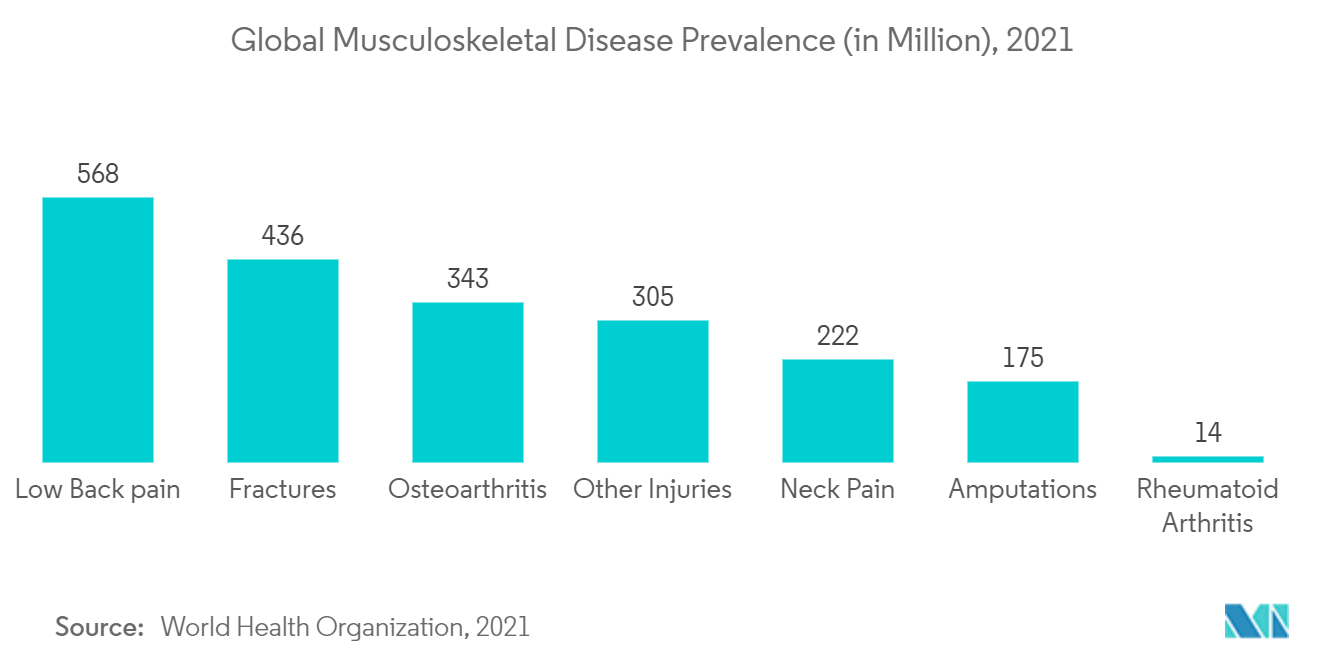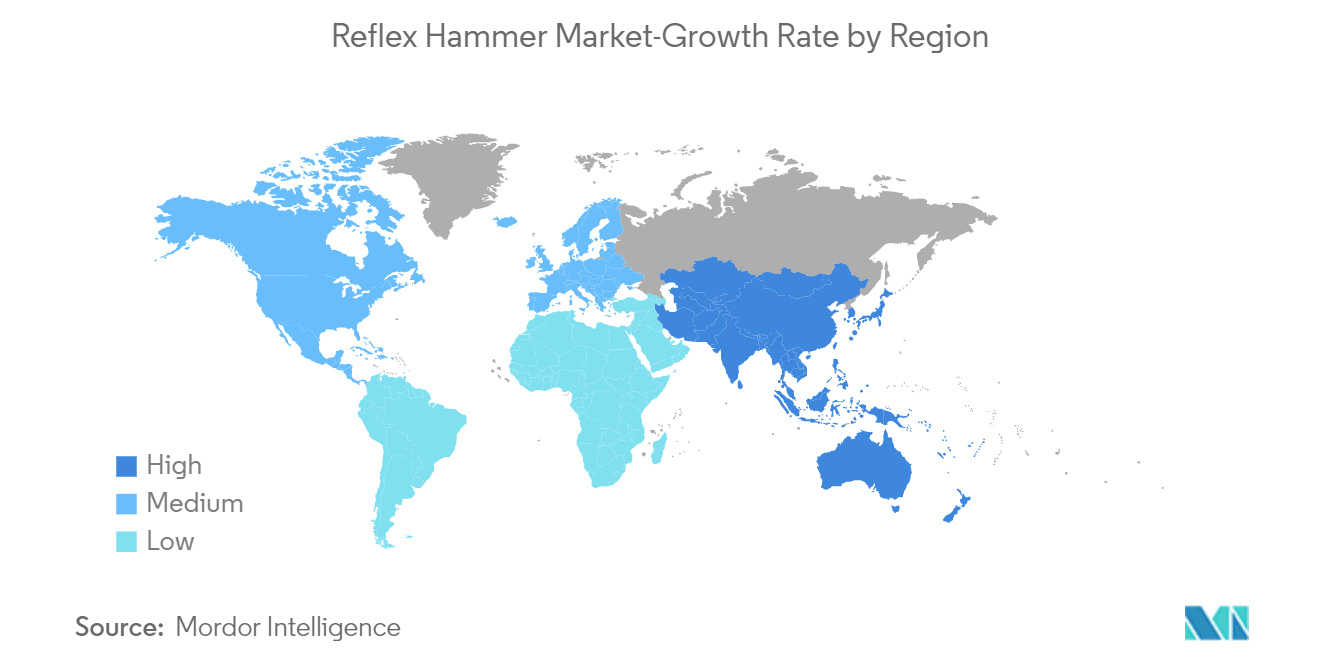Market Trends of Global Reflex Hammer Industry
This section covers the major market trends shaping the Reflex Hammer Market according to our research experts:
Clinics Segment is Anticipated To Register a Significant CAGR over the Forecast Period
By end-user, the clinic's segment is anticipated to hold a major market share of the reflex hammer market owing to the higher rate of diagnosis of several musculoskeletal and neurological diseases within specialized clinical settings. Growth in the incidences of these diseases and the rising number of establishments of standalone clinics are estimated to bolster the segment's growth.
For instance, according to the World Health Organization, in 2021, globally, nearly 1.7 billion people were suffering from neurological disorders, and the number is expected to rise in the future. Likewise, as per the same source, in 2021, musculoskeletal conditions were one of the major conditions leading to approximately 149 million years lived with disability, accounting for 17% of all years lived with disability worldwide. The biggest contributor to the overall burden of musculoskeletal diseases is low back pain, with a prevalence of 568 million people, followed by fractures affecting 436 million people and osteoarthritis impacting 343 million people. Moreover, injuries affect almost 305 million of the global population; neck pain impacts 222 million; amputations affect 175 million, and rheumatoid arthritis affects 14 million of the global population. Therefore, this increase in the patient population will boost clinical consultations for early diagnosis and examinations of medical ailments, contributing to the segment's growth.
Thus, all the aforementioned factors are anticipated to drive the segment's growth over the coming years.

North America Dominates the Market for Reflex Hammers
The robust growth of technology in the healthcare sector in the United States, the increasing burden of neurodegenerative diseases like Alzheimer's, Parkinson's disease, etc., product launches, and increasing demand for early diagnosis are expected to boost the market growth in the North American region. For instance, according to an article by the Centers for Disease Control and Prevention (CDC) entitled "Alzheimer's Disease and Related Dementias," revised in October 2020, an estimated 5.8 million Americans were living with Alzheimer's disease. The same source also reported that the number of people affected by Alzheimer's is expected to almost triple to 14 million people by 2060. Such a growing burden of the disease creates the need for early diagnosis and treatment, thereby having a positive impact on the market's growth.
Additionally, in November 2020, the American Heart Association, in collaboration with the Society of Vascular and Interventional Neurology and John Wiley and Sons, launched a new open-access journal, Stroke: Vascular and Interventional Neurology, which will focus on topics in the interventional, endovascular, medical, and surgical management of stroke and vascular disease of the brain, spinal cord, and head and neck. Thus, such factors will further increase awareness and adoption of reflex hammers within the patient population for early diagnosis.
Likewise, the rising burden of chronic disease across the globe is also one of the major factors increasing the demand for surgical tables, as end-stage chronic diseases generally demand surgery. For instance, as per the American Health Association, in 2022, operating rooms resumed their activities and observed an upsurge in medical health treatments and surgeries, leading to only a 10% lower rate of surgery by the end of 2020 in comparison to 2019. Hence, the rising number of surgical procedures may further support market growth.
As a result of the increasing number of people suffering from musculoskeletal and neurological disorders coupled with growing awareness, the market in North America is expected to grow over the forecast period.


